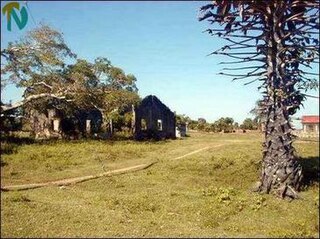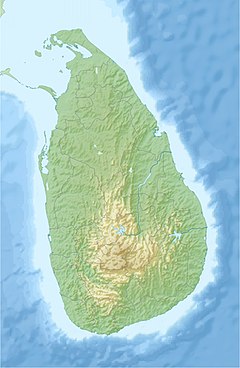Tamil Makkal Viduthalai Pulikal (TMVP), previously known as the "Karuna Group", is a political party in Sri Lanka. It was formed by Karuna Amman, a former leader of the Liberation Tigers of Tamil Eelam, after he defected from the organization in 2004. Initially a paramilitary group that helped the Sri Lankan Government fight the Tamil Tigers, the TMVP was registered as a political party in 2007. Under deputy leader Pillayan, they contested their first provincial elections in 2008, winning a majority in the Eastern Provincial Council. Members of the TMVP continue to carry arms under the auspices of the Sri Lankan government, which they claim is for their own safety from the Tamil Tigers, who carry out repeated attacks against them. The group is believed to be working with the Sri Lankan Army. They have been accused of human rights violation by local and international human rights organization.

Joseph Pararajasingham was a Sri Lankan Tamil civil servant, journalist, businessman and politician. He was Member of Parliament for Batticaloa District from 1990 to 2004 and a National List Member of Parliament from 2004 to 2005. A member of the Tamil National Alliance, he was shot dead on Christmas Day 2005 as he attended midnight mass at St. Mary's Cathedral, Batticaloa.
The 1990 Batticaloa massacre, also known as the Sathurukondan massacre, was a massacre of at least 184 minority Sri Lankan Tamil refugees, including infants, from three villages in the Batticaloa District by the Sri Lankan Army on September 9, 1990. Although the government instituted two investigations, no one was ever charged.

Kumarapuram massacre also known as 1996 Trincomalee massacre or 1996 Killiveddy massacre refers to the murder of 26 Sri Lankan Tamil civilians by the Sri Lankan Army soldiers on February 11, 1996. The victims included 13 women and 9 children below the age of 12. Further 28 civilians were severely injured as well. The event took place in a village called Kumarapuram, located in the eastern district of Trincomalee. It was a notable mass murder of civilians since the resumption of armed conflict between rebel forces and Sri Lankan armed forces since April 1995, as part of the Sri Lankan civil war. The then-government arrested a number of soldiers and home guards who allegedly carried out the massacre. A court case was started on 2004. On 27 July 2016 the court acquitted six former army Corporals who were accused over the massacre, after they were found not guilty.
The Eastern University massacre was the arrest and subsequent mass murder of 158 minority Sri Lankan Tamil refugees who had taken refuge in the Eastern University campus close to the city Batticaloa on September 5, 1990. A witness identified Sri Lankan Army personnel as the perpetrators. The event is part of what is known amongst Sri Lankan Tamils as Black September, a series of civilian massacres. The Sri Lankan government eventually established a presidential commission of inquiry. The inquiry found evidence of illegal abductions and mass murder. It also named the responsible parties, but there is currently no evidence of any judicial follow up to the inquiry.
The Kalmunai massacre refers to a series of mass killings that occurred in June 1990 in Kalmunai, a municipality within the Ampara District of Sri Lanka's Eastern Province. The massacre of Tamil civilians was allegedly carried out by the Sri Lankan Army in retaliation for an earlier massacre of Sri Lankan police officers. The University Teachers for Human Rights, a human rights organization, put the number of dead in the second massacre at 250, while a local Member of Parliament claimed that at least 160 people were killed.
The Mylanthanai massacre happened on August 9, 1992 when 35 minority Sri Lankan Tamils, including 14 children, at Mylanthanai in Batticaloa District in Sri Lanka, were killed.
Mirusuvil massacre refers to the massacre and subsequent mass burial of eight Sri Lankan Tamil civilians on 20 December 2000.
Eelam War I is the name given to the initial phase of the armed conflict between the government of Sri Lanka and the LTTE.

Eelam War II is the name given to the second phase of armed conflict between Sri Lankan military and the separatist Liberation Tigers of Tamil Eelam. The war started after the failure of peace talks between the Premadasa government and the LTTE. This phase of the war was initiated by the LTTE who massacred almost 600 Sinhalese and Muslim police personnel after they were ordered by the Premadasa government to surrender to the LTTE. The truce was broken on June 10, 1990 when the LTTE in October expelled all the 28,000 Muslims residing in Jaffna.
The Kattankudy Mosque Massacre was the killing of over 147 Muslim men and boys on 3 August, 1990. Around 30 armed Tamil militants raided two mosques in Kattankudy where over 300 people were prostrating in Isha prayers. The Sri Lankan government, survivors, and observers accuse the Liberation Tigers of Tamil Eelam (LTTE) of committing the crime. The LTTE denied involvement and never retracted the denial.

The Prawn farm massacre, also known as the 1987 Kokkadichcholai massacre, took place on January 27, 1987 in the village of Kokkadichcholai, Sri Lanka. At least 83 Tamil civilians were killed. The Special Task Force, an elite special forces unit of the Sri Lanka Police specializing in counter-terrorist and counter-insurgency operations, was accused of having perpetrated the massacre. Asian Agricultural Products Limited (AAPL), the Hong Kong based part-owner of the farm filed for arbitration by ICSID, an arm of the World Bank, against the government of Sri Lanka; AAPL prevailed in the arbitration, eventually received payment and families of the victims were paid some monetary compensation.
The 1984 Mannar massacre was the killing of 200+ minority Sri Lankan Tamils civilians by Sri Lankan Army soldiers in the town of Mannar, north-western Sri Lanka, on December 4, 1984. The attack was triggered when three Army jeeps hit a land mine, killing one soldier. In retaliation, landmarks such as the Central hospital, the post office, a Roman Catholic convent as well as villagers working in rice paddy fields and bus passengers were attacked. Villages around Mannar town such as Murunkan and Parappankadal were also attacked. Immediately after the incident, the then Sri Lankan President J. R. Jayawardene appointed a Presidential commission of inquiry. A local Roman Catholic priest, Mary Bastian who was a member Presidential commission was later killed in January 1985. A Methodist minister George Jeyarajasingham, who was a witness to the incident, was also killed in December 1984.

The 1985 Trincomalee massacres refers to a series of mass murder of Tamil civilians by the Sri Lankan military and Sinhalese home guards in Trincomalee District, Sri Lanka. In a succession of events that spanned over two months, hundreds of Tamil civilians were massacred and thousands were driven out by the Sri Lankan military and Sinhalese mobs in order to colonize the area. Almost every Tamil settlement in the district was destroyed during this well-orchestrated campaign to drive out the local Tamil population. Several Tamil women were also raped. In September 1985, the entire Tamil population of Trincomalee town was displaced to forests and refugee camps in an attack that wiped out the town, including the destruction of 12 temples and a mosque. Since August 16, over 50,000 Tamils who were forced to flee the town ended up in refugee camps in the Jaffna and Batticaloa districts.

The 1987 Eastern Province massacres were a series of massacres of the Sinhalese population in the Eastern Province of Sri Lanka by Tamil mobs and Liberation Tigers of Tamil Eelam (LTTE) during the Sri Lankan Civil War. Though they began spontaneously, they became more organized, with the LTTE leading the violence. Over 200 Sinhalese were killed by mob and militant violence, and over 20,000 fled the Eastern Province. The violence has been described as having had the appearance of a pogrom.
Sexual violence against Tamils in Sri Lanka has occurred repeatedly during the island's long ethnic conflict. The first instances of rape of Tamil women by Sinhalese mobs were documented during the 1958 anti-Tamil pogrom. This continued in the 1960s with the deployment of the Sri Lankan Army in Jaffna, who were reported to have molested and occasionally raped Tamil women.
The Veeramunai massacres refers to the mass killing and disappearances of over 250 Tamil civilians by Sri Lankan security forces and Muslim home guards in 1990.







